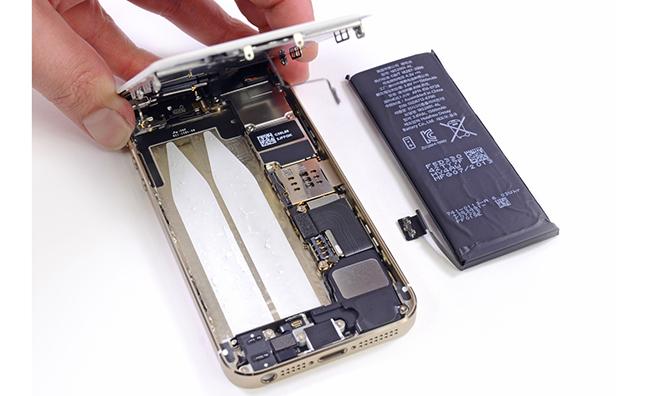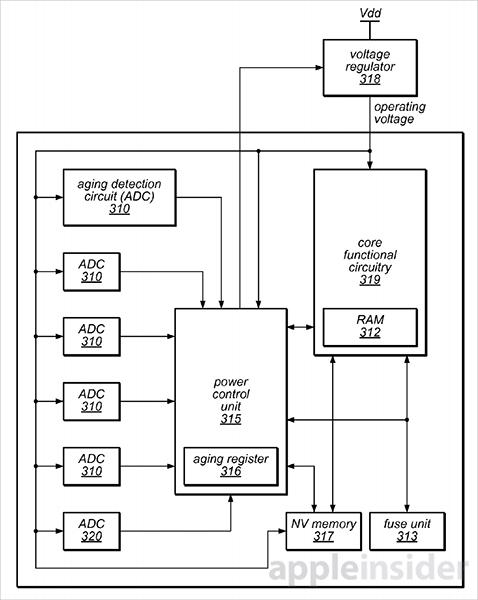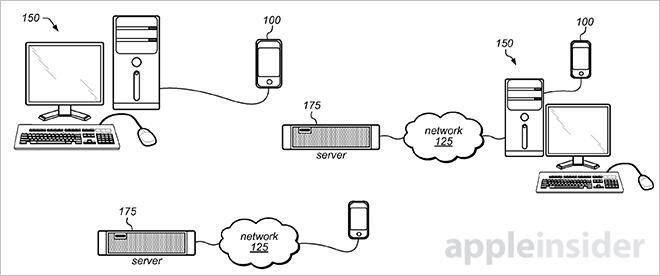Apple tech monitors device aging, adjusts operating parameters to ensure optimal performance
The U.S. Patent and Trademark Office on Tuesday issued Apple a patent describing a method of monitoring the aging of a device's electronics, comparing the data with a global average and modifying operating parameters to maximize performance, battery efficiency and user experience over the product's advertised lifetime.
Apple's U.S. Patent No. 8,671,170 for "Modifying operating parameters of a device based on aging information" details a system that uses aging detection circuits to monitor electronic components in a portable device such as an iPhone.
By comparing the data with a predefined aging scale, or alternatively the average aging of a given device model collected from other users, operating parameters can be modified to help the product meet its life expectancy, allow greater performance and increase battery life.
A number of metrics are considered when monitoring for device aging, including degradation of transistor performance due to heat and other operating factors. Depending on how a device is used, certain components may age more quickly than the universal average. For example, a product used mainly for gaming may see more stress on graphics and processing circuitry.
To collect the necessary information, the patented technology employs aging detection circuits, which can be ring oscillator or counter type components. For example, aging may be determined by monitoring variations in a ring oscillator's frequency. Thresholds for various device functions, like watching videos and playing games, may be assigned to an aging register.
In some embodiments, the device's power control unit is instructed to adjust supply voltage to a given IC based on information from the aging register. Granular control can be achieved by checking ADC output for certain operating modes, such as Web browsing or reading an e-book.
In addition to ADC readings, environmental considerations are taken into account when monitoring device aging. Information regarding location, time of day, operating frequency, operating intensity, temperature and shaking (in the case of gaming) can all be incorporated into the aging calculation.
The patent also describes a method of collecting aging information from multiple devices to generate statistics for a specific device. Devices may connect via local computer, remote server or other means to transfer the necessary information to an off-site database. Comparing correlated ADC data with environmental information, a general overview of operating parameters can be constructed and applied to future updates.
As for operating optimization, devices may receive an update once or more per year based on supplied aging information. The modifications can be weighted for life expectancy, higher performance, better battery life and better user experience, among other attributes.
For example, firmware can be modified to allow the device to operate at or above levels that will allow aging to continue at sustainable levels. In other words, the device is made to operate at levels that ensure it can meet its expected lifetime.
The rest of the document offers further detail on ADCs and the statistical models associated with aging registers.
Apple's device aging detection system patent was first filed for in 2011 and credits Michael Frank and Date Jan Willem Noorlag as its inventors.
 Mikey Campbell
Mikey Campbell














 Mike Wuerthele
Mike Wuerthele
 Malcolm Owen
Malcolm Owen
 Chip Loder
Chip Loder

 William Gallagher
William Gallagher
 Christine McKee
Christine McKee
 Michael Stroup
Michael Stroup
 William Gallagher and Mike Wuerthele
William Gallagher and Mike Wuerthele






